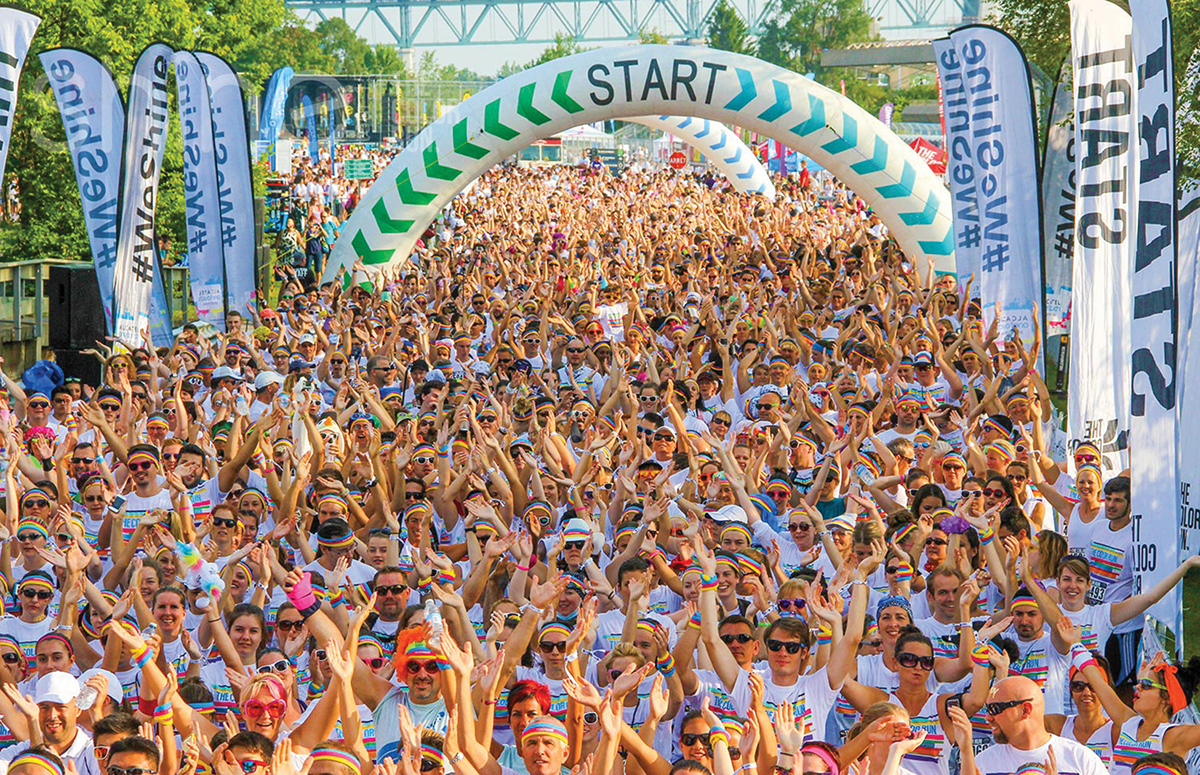

Gauging Interest: How Do Overseas Events Get Their Start?
The Internet and social media have made it easy for people to learn about sports events in other countries. It isn’t unusual for us to receive e-mails and messages from people internationally asking whether we’ll plan to bring The Color Run to their city; in fact, in terms of international expansion, we have been lucky: about 90 percent of our events in other countries came about because event production teams over there reached out to us.
How Do You Vet Inquiries?
The first thing we do is send out an e-mail to the person who is asking about hosting The Color Run. We ask them about their experience in hosting events, their ability to work with the city and its tourism board and their ability to handle everything from planning to logistics and permits, as well as marketing and managing the race. In particular, we are looking for partners who have experience with large-scale events that draw thousands of people. We need them to know this is not the same as throwing together a quick 5K. It takes a lot more involvement to make this race work successfully. If the person looks like they might be a good fit, we encourage them to draw up a business plan to see if we can work with them.
 Why Work with a Local Event Production Team?
Why Work with a Local Event Production Team?
Sometimes, it surprises people when they learn that we don’t really need to fly in to put on The Color Run in other countries. Working with a local event producer has so many advantages over trying to do it ourselves. The first (and most obvious) benefit is the fact that a local organizer has actual knowledge of the city, the country and the people there. The second is the local group’s ability to communicate effectively with the local government. Many times, a city recognizes the global brand of an event, but they are hesitant to work with someone who is not onsite. If they are working with a local company, they are much more comfortable about the event as a whole. It is what allows us to successfully come back to many cities overseas year after year.
A local event production team also will know far more about permitting and logistics in their own jurisdiction. Permitting varies widely from country to country (just as it does from city to city locally in the U.S.) In some places, based on the permitting process, the local production team will learn only six weeks out if the event is a go, meaning they have to fast-track everything, including the marketing, so the event can go off on time. In some areas, the event producer can get approval 12 months ahead of the date, which of course creates much more flexibility.
Sometimes, we are asked whether we worry about security and safety of participants in international events, and of course, with any mass event, security is something you have to think about. It’s definitely something we emphasize in all our planning, both in the U.S. and overseas. And here again, this is a big advantage to having an event production team in that area. They are familiar with the city itself, and with the authorities, and they know where good and bad areas are – something you might not know if you were trying to do this yourself from your office in the U.S.

People sometimes ask what the greatest challenge is in producing international events. For us, it’s the physical distance and time zone change. It is very hard to communicate with people who are eight to 15 hours ahead; there aren’t many opportunities for us to communicate with one another in real time.
Consistency across events can be a challenge. Working with multiple partners in many countries with various availability of goods and services can lead to differences from event to event. Our supply chain helps eliminate some of these differences, but it's something you have to constantly check.
We are fortunate in that we have partners internationally we can count on. A majority of The Color Runs in other countries are put on by companies we have been partners with since the beginning, and we trust them to troubleshoot most things that come up. If something happens that is more problematic, we’ll get on the phone with them and we’ll work through it together. As a result, the element of the unknown is much less of a problem for us than you’d think.
Getting an Expert’s Advice
Even with the best partners internationally, it’s definitely the best practice to have a good attorney or someone on your side who is well-versed in international law. Laws differ from country to country and you’ll need someone with the expertise and knowledge to help you out when necessary; you don’t want to be trying to do your research on the Internet.
Equipment, Materials and More
The event company that is working with us will produce their own materials according to our directions or buy from us all the materials they need to put on The Color Run. For us, expanding successfully has meant keeping everything the same, right down to the name of the race. Doing this helps with the challenge of keeping things consistent across 30 or more countries. That means the participant kits, finisher medals, the color powder that is used during the race – it’s all the same as in the U.S. Our partners market the event in their own language, of course. The great thing for our event production teams in other countries is that they can reuse almost all the course equipment each year.
How Do You Know It’s The Right Time to Expand Internationally?
For us, it was listening to the demand. Australia had asked us about hosting the event and was obviously very interested. The number of e-mails or calls we’re getting from someone who really wants to host an event will also tell us whether we should look into something.
Sometimes, though, your event just isn’t going to be a good fit for a city. Maybe it takes more dedication than the local organizing company originally realized. Maybe the local economy isn’t right and/or it’s going to be cost-prohibitive to put on the event. Maybe the demand for the event just isn’t there. Sometimes, the local government doesn’t want to do any more paint races. We usually find it’s an amicable split since both parties realize things aren’t going to work out. This is true in the U.S. and internationally.
There are all kinds of good reasons to expand an event overseas, but they come back to recognizing a demand. Maybe sometimes, ego can get people started, but ego will not take you the whole way. It is a challenge to expand internationally. It takes someone who is dedicated, and who understands the process may not go as quickly as they think, or as they hope.
When The Color Run first started expanding internationally, we were learning as we went along. People were calling us, wanting to be the first to host it in their country. We learned very quickly that having the best partners and having good communication with them was the way to succeed.
These days, we love what we do and we love seeing the photos from around the world, showing those happy faces colored in powder. We feel pretty blessed we were able to take our event far and wide and to know that people are still enjoying it. SDM

